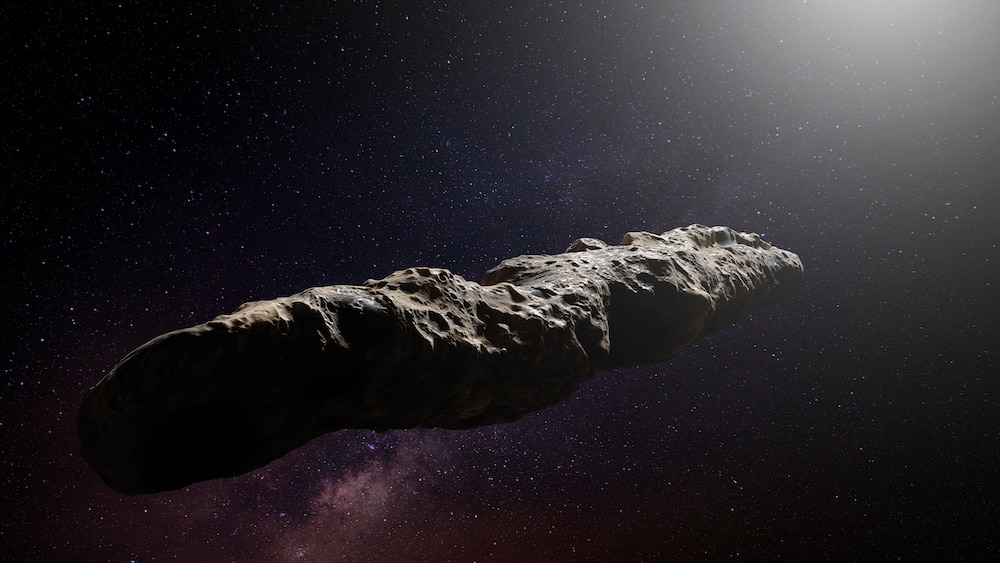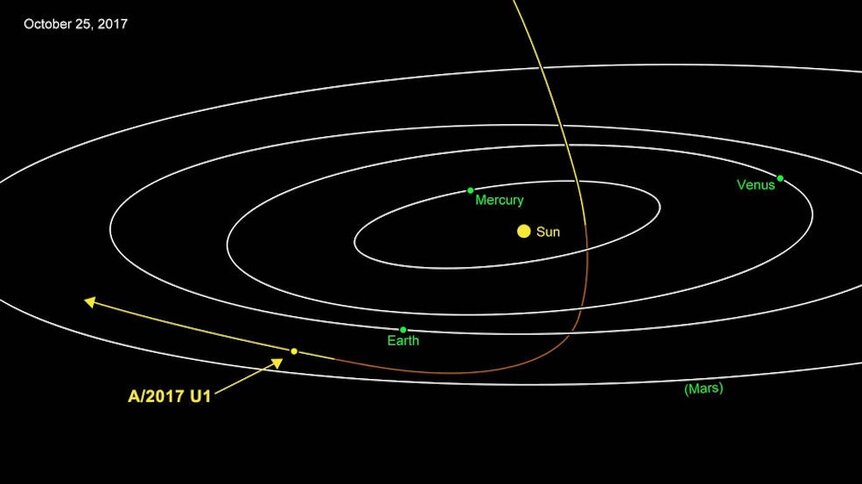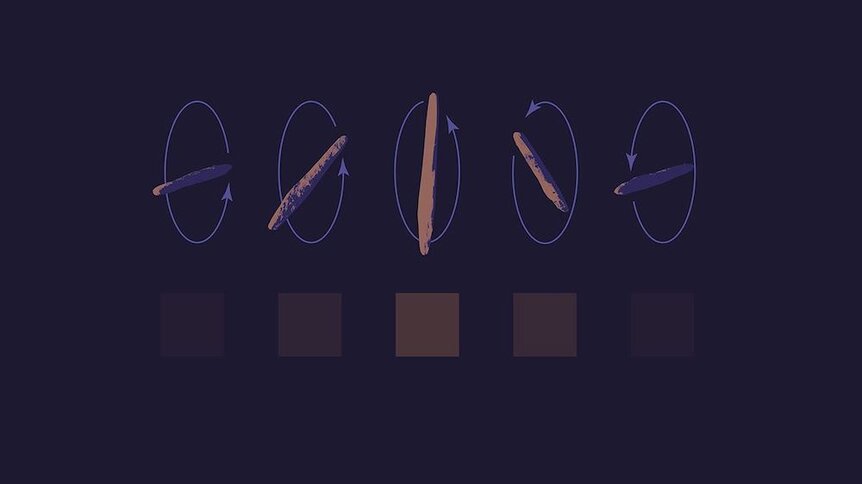Create a free profile to get unlimited access to exclusive videos, sweepstakes, and more!
'Oumuamua: Resident Alien's radio receiver isn't alien tech, but it is awesome!
Hello, we've been trying to reach you about your spaceship's extended warranty.

It can be tempting to imbue seemingly unexplainable experiences with extraterrestrial explanations, but there are three words you ought to remember whenever looking with wonder into the night sky: it's never aliens. Unless…
In the latest episode of SYFY's Resident Alien, our hero Harry Vanderspeigle (Alan Tudyk) makes a passing reference to a radio transmitter that will help him contact his people, a transmitter which the people of Earth call 'Oumuamua.
You might remember 'Oumuamua from when it made headlines in 2017. The elongated cigar-shaped object was the subject of all kinds of investigation and fervor within the scientific community, while fueling conspiracy theories about its alleged alien origin. Resident Alien, which exists in a world in which aliens are real and do in fact visit Earth, pokes fun at that speculation by giving 'Oumuamua an actual alien pedigree.
Here in the real world, 'Oumuamua isn't a piece of drifting alien tech — probably — but it is still very cool!
WHERE DID IT COME FROM?
We first caught a glimpse of 'Oumuamua, which was known as A/2017 U1 at the time, in October of 2017. It was observed by the Pan-STARRS1 telescope at the University of Hawaii and was already on its way back out of the solar system.
Right away astronomers knew there was something weird about this object. 'Oumuamua had a couple of characteristics which set it apart from most of the things we see buzzing around the solar system. Namely, its orbit and its speed.
It was traveling fast. Like, really fast. That speed increased as it approached and passed the Sun, until it was moving at a blistering 196,000 kilometers per hour. That speed is faster than solar escape velocity which gave us more than a clue that it came from outside the solar system.
The next clue was its orbit. Objects which live in the solar system, even long period objects like Halley's comet, have orbits which ultimately return them to the Sun. That's sort of what it means to be a solar system object.
Those orbits come in two flavors, close to circular and elliptical. Whether your orbit is a circle or a stretched oval, it still closes in on itself and comes back around. But 'Oumuamua's orbit was hyperbolic. Its journey past the Sun was a one-time deal.
For the first time, in all the centuries we've been looking at our cosmic neighborhood through our telescopes, we'd caught passage of a visitor from an interstellar visitor.
WHAT DO WE KNOW ABOUT IT?
Tracing 'Oumuamua's trajectory backward tells us it came roughly from the region of Vega, a star in the constellation of Lyra. Although, in the 300,000 years it took 'Oumuamua to reach us, Vega has moved considerably. Stars do that, even while they seem like fixed and immovable objects from our perspective. As a consequence, the two objects never actually shared the same general space.
We're pretty sure it's unusually long, and that it's tumbling end over end, but that's about as good as it gets in terms of visualizing what it looks like. We're not sure of 'Oumuamua's precise shape but we were able to measure its luminosity as it streaked away from us. Those observations showed variable luminosity as it tumbled, suggesting its roughly 10 times longer than it is wide.
Figuring out what 'Oumuamua is made of has been a challenge. Explanations have ranged from a comet or an asteroid, to a chunk of nitrogen blasted off of a Pluto-like exoplanet. And, of course, there are those who believe it to be a piece of alien technology sent to spy on us. To be clear, unusual and unexplained can be answer enough when faced with a lack of evidence. Alien voyeurs sit at the bottom of a very long list of what it might be. What we know for sure is that it's unusual and, unfortunately, it didn't stick around long enough for us to get a really good look at it.
As it passed the Sun, gravity changed its trajectory, whipping it back out of the solar system on a heading toward the constellation Pegasus. Even now, more than four years later, it's still in our solar system and will be for quite a while. At the time of this writing, 'Oumuamua is at about 29 AU, or roughly 4.3 billion kilometers from the Sun. You can track 'Oumuamua using The Sky Live's live tracker.
At its current rate, 'Oumuamua will be beyond the Kuiper belt, roughly 55 AU sometime around 2027. If that's where you draw the boundary of the solar system, it will still be visiting us for another five years, give or take. If you draw the boundary at the edge of the Sun's influence, it'll be here for a while. Which could give us an opportunity to chase it down if we wanted to.
CATCHING UP?
A recent paper published on the Arxiv preprint server outlines a plan by which we could send a probe to catch up with the interstellar object sometime in the 2050s.
The paper proposes to launch a craft in February of 2028 on a circuitous path around the solar system, gathering speed on its way to Oumuamua. Over the first four years of the mission, it would get gravity assists from Earth, Venus, and finally Jupiter before tearing off on an intercept course.
The proposed mission is called Project Lyra and is championed by researchers at the Initiative for Interstellar Studies. If launched in 2028, the craft could catch up with 'Oumuamua by 2054. Though, at present, Project Lyra is only a feasibility study and there is no official support for such a mission. Which is a little bit of a shame. While there are an estimated seven interstellar objects which pass through the inner solar system every year, most of them go undetected and none have captured the public imagination in the way 'Oumuamua has.
The opportunity to see it up close and finally answer all our lingering questions is hard to pass up and won't last forever. If it really is a piece of alien tech and we let it fall through our fingers, here's hoping they come calling again. Or not. We don't know what they're up to.
































